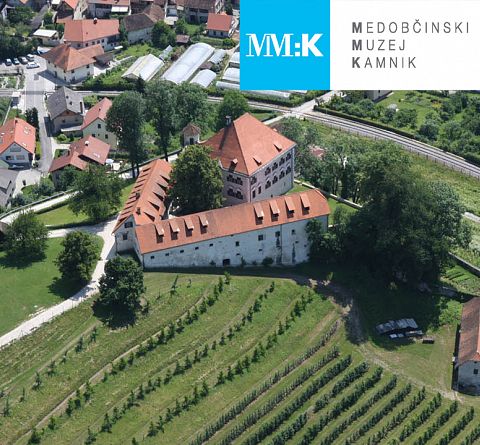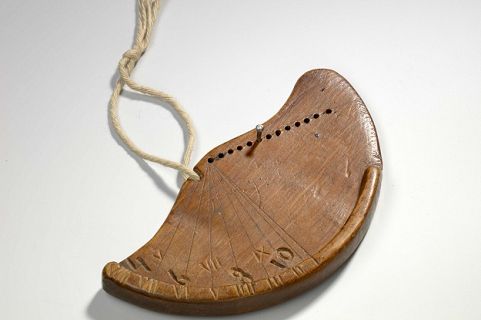Pocket sundial, Velika planina, cca 1935
A pocket sundial has been preserved in Vlasto Kopač’s collection on the great mountain pastoral heritage. It was made by Jurij Humar, the father of Jožefa Humar, who was also a folk artist, but she also made these watches, door handles, etc.
For shepherds, time was not so important, but they used natural signs to determine when it was noon, when it was six in the afternoon, and so on. Jurij Humar, probably also following the example of sundials on church bell towers and castles, came up with his pocket sundial.
He made it out of a palm-sized board and cut it into a crescent shape. He carved notches into the clock in a semicircle and marked them with Arabic and Roman numerals. He drilled 13 holes along the top edge, into which he stuck a nail that cast a shadow on the board after the sun. Every 14 days, he stuck a nail in another hole, measuring the time fairly accurately in the shade. The morning time was indicated by Arabic numerals, and the afternoon by the Roman numerals on the convex edge of the sundial.
The pocket sundial is proof of how the shepherd cleverly observed the nature around him, thought, created and lived in perfect symbiosis with the natural environment.




